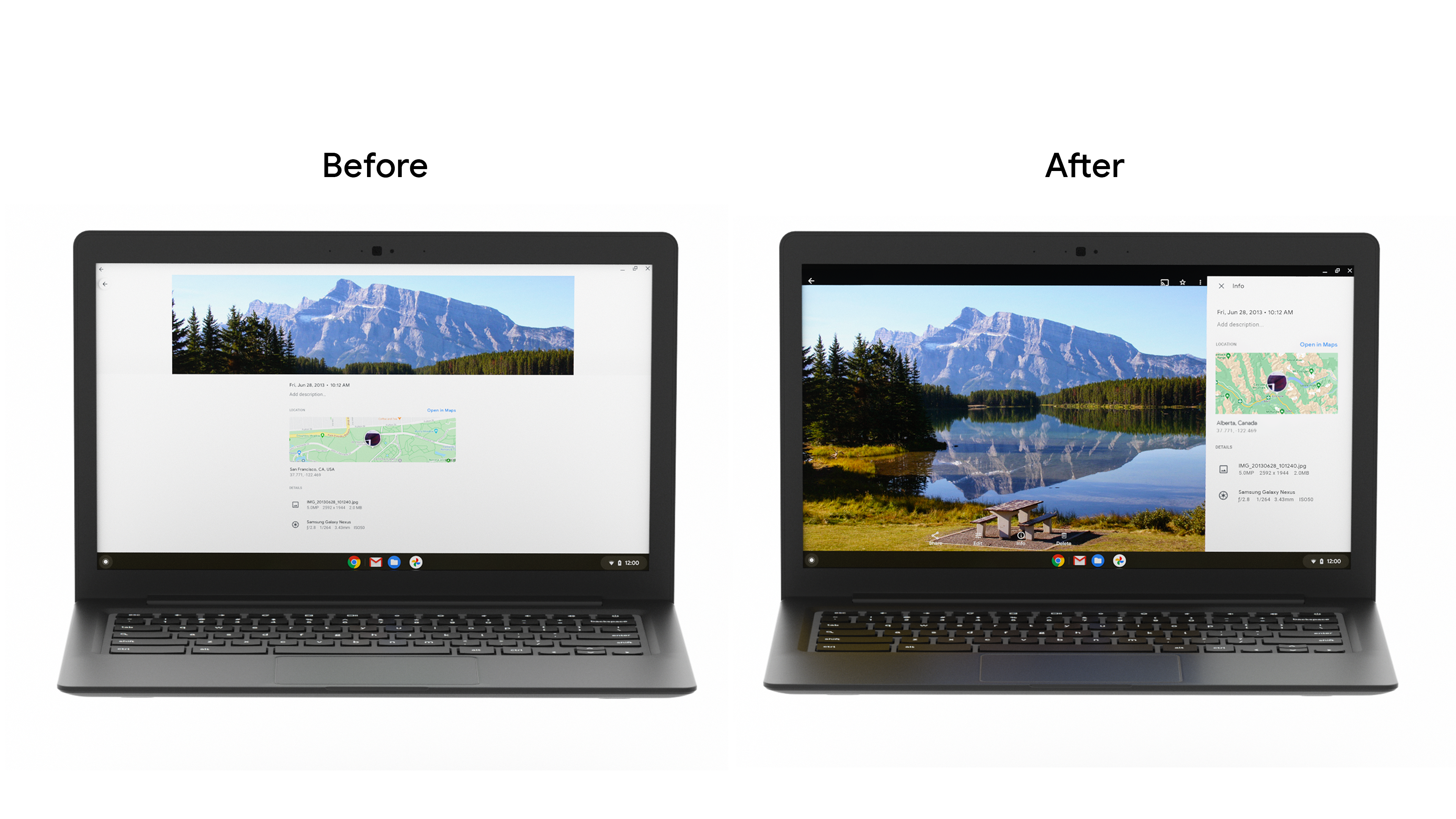Google Photos คือพื้นที่รวบรวมความทรงจำของคุณ และทีมพัฒนาเชื่อว่าผู้ใช้ควรเพลิดเพลินกับความทรงจำเหล่านั้นได้ในทุกอุปกรณ์ เพื่อให้มั่นใจว่าฟีเจอร์ของแอปจะทำงานได้ดีในแท็บเล็ต Android, อุปกรณ์แบบพับได้ และอุปกรณ์ ChromeOS ทางบริษัทจึงลงทุนพัฒนาเลย์เอาต์ที่ตอบสนองในทุกหน้าจอ
สิ่งที่พวกเขาทำ
ทีมพัฒนา Google Photos ได้พิจารณาวิธีแก้ไขเลย์เอาต์สำหรับหน้าจอขนาดใหญ่ โดยอาศัยแนวทางปฏิบัติแนะนำด้านความสามารถในการใช้งานและงานวิจัยเพื่อพิจารณาว่าต้องการแก้ไขเลย์เอาต์สำหรับหน้าจอขนาดใหญ่ในลักษณะใด โดยเริ่มจากการปรับปรุงเลย์เอาต์ตารางกริดด้วยการลดความหนาแน่นเมื่อหน้าจอมีขนาดเกิน 600dp สำหรับแท็บเล็ต และ 1008dp สำหรับแล็ปท็อป ซึ่งช่วยให้ผู้ใช้ดูและเลื่อนดูรูปภาพในรูปแบบที่ใหญ่ขึ้นได้ง่ายขึ้น

จากนั้นก็แทนที่ลิ้นชักด้านล่างของแผงข้อมูลด้วยแถบด้านข้าง เนื่องจากมักใช้หน้าจอแท็บเล็ตและเดสก์ท็อปในแนวนอน การเปลี่ยนแปลงแนวทางนี้จึงช่วยลดการยืดบนหน้าจอที่กว้างขึ้น และมอบสรีรศาสตร์ที่ดีขึ้นสำหรับวิธีที่ผู้ใช้แท็บเล็ตถืออุปกรณ์ นอกจากนี้ ยังปรับปรุงกล่องโต้ตอบ Bottom Sheet และเพิ่มแถบแสดงข้อความเพื่อให้แสดงข้อความของผู้ใช้บนหน้าจอขนาดใหญ่ได้ง่ายขึ้น

โดยได้เปลี่ยนคอมโพเนนต์การนำทางจากแถบด้านล่างเป็นแถบแนวตั้งเพื่อให้ผู้ใช้ไปยังส่วนต่างๆ และทำงานได้ง่ายขึ้น แม้ว่า Google Photos จะสร้างฟีเจอร์นี้ภายในโค้ดเบสของตนเอง แต่นักพัฒนาแอปก็สามารถสร้างฟีเจอร์นี้ได้โดยใช้คอมโพเนนต์ Material ของแถบนำทางใหม่เพื่อปรับปรุงการยศาสตร์ ลดการยืด และเพิ่มพื้นที่หน้าจอสำหรับแอปที่เลื่อนในแนวตั้ง
นอกจากนี้ ทีมพัฒนาได้ปรับขนาดตารางแบบไดนามิกเพื่อเพิ่มความคล่องตัวในการเปลี่ยนระหว่างท่าทางและขนาดหน้าจอต่างๆ รวมถึงปรับปรุงการรองรับอุปกรณ์เสริม เช่น คีย์บอร์ดและสไตลัส เนื่องจากผู้บริโภคที่ใช้อุปกรณ์ ChromeOS เพื่อเพิ่มประสิทธิภาพการทำงานมีจำนวนเพิ่มขึ้นเรื่อยๆ จึงจำเป็นอย่างยิ่งที่จะต้องตรวจสอบว่าแอปต่างๆ รองรับวิธีการป้อนข้อมูลที่หลากหลาย ซึ่งรวมถึงคีย์บอร์ด เมาส์ และการสัมผัส
ผลลัพธ์
ทีมได้เปิดตัวการเปลี่ยนแปลงเหล่านี้ผ่านการทดสอบ A/B และสังเกตเห็นว่าDAU สำหรับฟีเจอร์ผลิตภัณฑ์หลักบนหน้าจอขนาดใหญ่เพิ่มขึ้นโดยรวม โดยการใช้งานฟีเจอร์เก็บถาวรเพิ่มขึ้นถึง 53% ทีม Google Photos จะลงทุนต่อไปในการปรับปรุงประสบการณ์ของผู้ใช้ในทุกขนาดหน้าจอเพื่อให้มั่นใจว่าผู้ใช้จะได้รับประสบการณ์ที่ยอดเยี่ยมในทุกอุปกรณ์
เริ่มต้นใช้งาน
ดูข้อมูลเพิ่มเติมเกี่ยวกับวิธีเริ่มต้นเพิ่มประสิทธิภาพแอปสำหรับหน้าจอขนาดใหญ่

